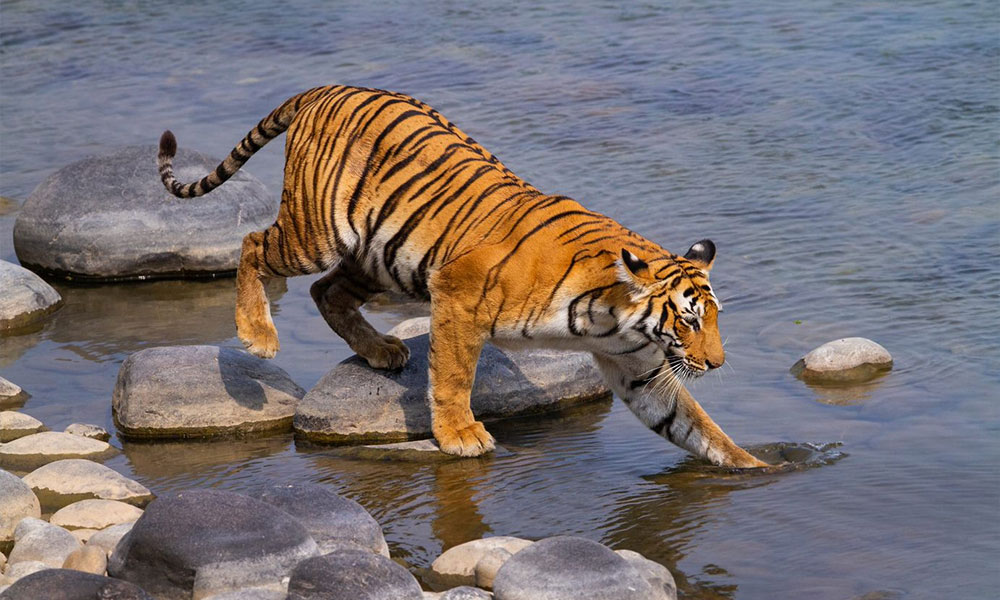National Parks in India
Jim Corbett National Park - Uttarakhand
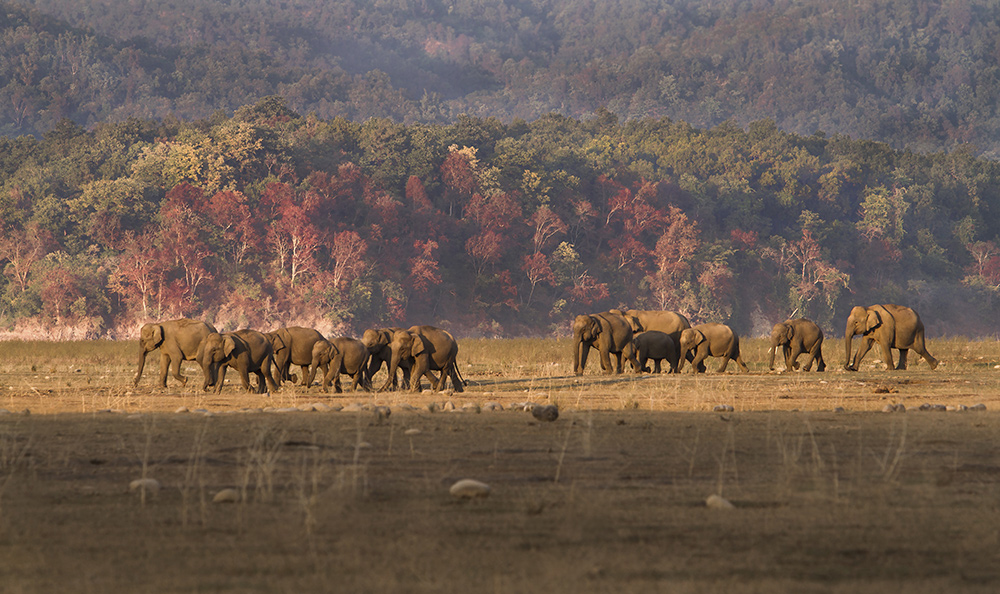
Jim Corbett National Park, nestled in the picturesque landscapes of Uttarakhand, India, stands as a testament to the nation's commitment to wildlife conservation. Established in 1936 and named after the renowned conservationist Jim Corbett, the park spans approximately 520 square kilometers, showcasing a mesmerizing blend of diverse ecosystems. Its rich biodiversity includes the iconic Bengal tiger, leopards, elephants, and an array of deer species. The Ramganga River meanders through the park, enhancing its scenic beauty and providing a lifeline to the diverse flora and fauna. The Dhikala zone, a highlight within the park, invites visitors to witness the splendor of nature through jeep and elephant safaris, offering a unique opportunity to observe wildlife in their natural habitat. As one of the pioneering participants in the Project Tiger initiative, Jim Corbett National Park has played a pivotal role in the conservation of the endangered Bengal tiger. With its verdant forests, riverine vegetation, and commitment to ecotourism, the park continues to captivate the hearts of nature enthusiasts and conservationists alike, preserving a precious slice of India's natural heritage.
Sundarbans National Park - West Bengal
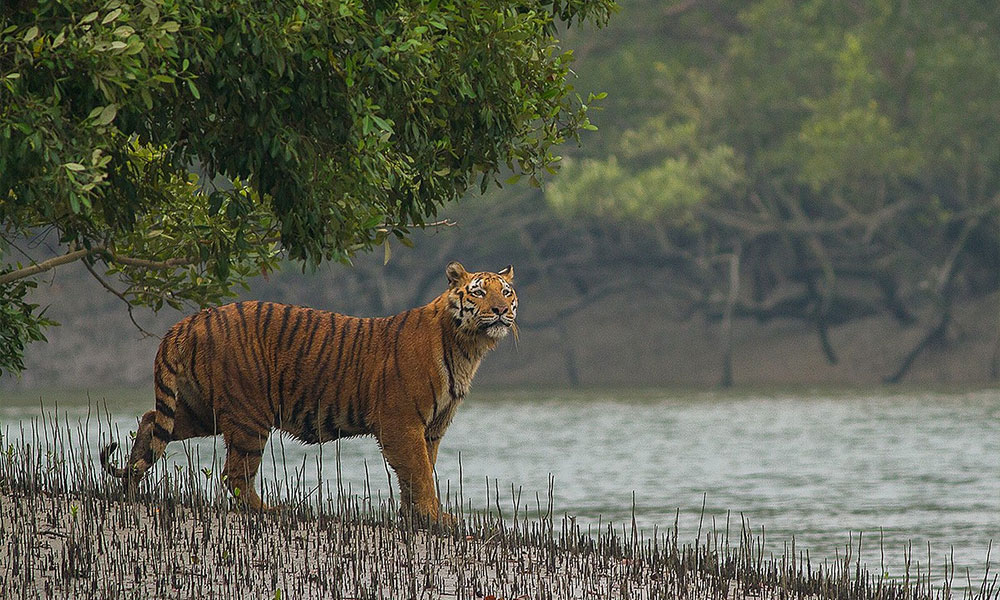
Sundarbans National Park, situated at the delta of the Ganges, Brahmaputra, and Meghna rivers in the southern part of Bangladesh and the eastern part of India, is a unique and enchanting wilderness. Recognized as the largest mangrove forest in the world, this UNESCO World Heritage Site covers an expansive area of about 10,000 square kilometers, comprising a mosaic of estuaries, tidal waterways, and small islands. What makes Sundarbans truly exceptional is its incredible biodiversity, including the elusive Bengal tiger, spotted deer, crocodiles, and a myriad of bird species. The park is crisscrossed by an intricate network of water channels, creating an ecosystem that is both dynamic and fragile. Beyond its biological significance, Sundarbans is integral to the livelihoods of local communities, who rely on its resources for sustenance. Mangrove conservation efforts and sustainable ecotourism initiatives are crucial in preserving the delicate balance of this remarkable natural wonder, where land and water harmoniously intertwine to form one of the most intriguing and vital ecosystems on the planet.
Kaziranga National Park - Assam

Kaziranga National Park, located in the northeastern state of Assam, India, is a biodiversity hotspot and a UNESCO World Heritage Site. Covering an expansive area of approximately 1085 square kilometers, it is celebrated for its remarkable conservation success, particularly in safeguarding the endangered Indian one-horned rhinoceros. The park's diverse landscape includes grasslands, wetlands, and dense forests, providing a habitat for a wide range of wildlife, including tigers, elephants, wild water buffaloes, and various species of deer and birds. The mighty Brahmaputra River flows through the park, adding to its scenic grandeur. Kaziranga's conservation efforts, coupled with strong anti-poaching measures, have contributed significantly to the revival of the one-horned rhinoceros population. The park also serves as a model for successful wildlife management and ecotourism, attracting visitors from around the world who are eager to witness the rich biodiversity and natural beauty that define Kaziranga National Park.
Manas National Park - Assam

Manas National Park, located in the northeastern state of Assam, India, is a UNESCO World Heritage Site and a vital component of the Eastern Himalayan biodiversity hotspot. Encompassing an area of about 950 square kilometers, the park is renowned for its exceptional natural beauty and rich biodiversity. Straddling the picturesque Manas River, the park's diverse landscape includes grasslands, subtropical forests, and wetlands. Manas is celebrated for its conservation success, particularly in the recovery of populations of the endangered Bengal tiger, Indian one-horned rhinoceros, and pygmy hog. The park is also home to a remarkable variety of fauna, including elephants, wild water buffaloes, and various species of deer and primates. Besides its ecological significance, Manas National Park has cultural importance, as it is contiguous with the Royal Manas National Park in Bhutan, forming a transboundary conservation area. The park provides a haven for nature enthusiasts, researchers, and wildlife lovers, offering an immersive experience in the heart of a vibrant and well-preserved ecosystem.
Gir Forest National Park - Gujarat
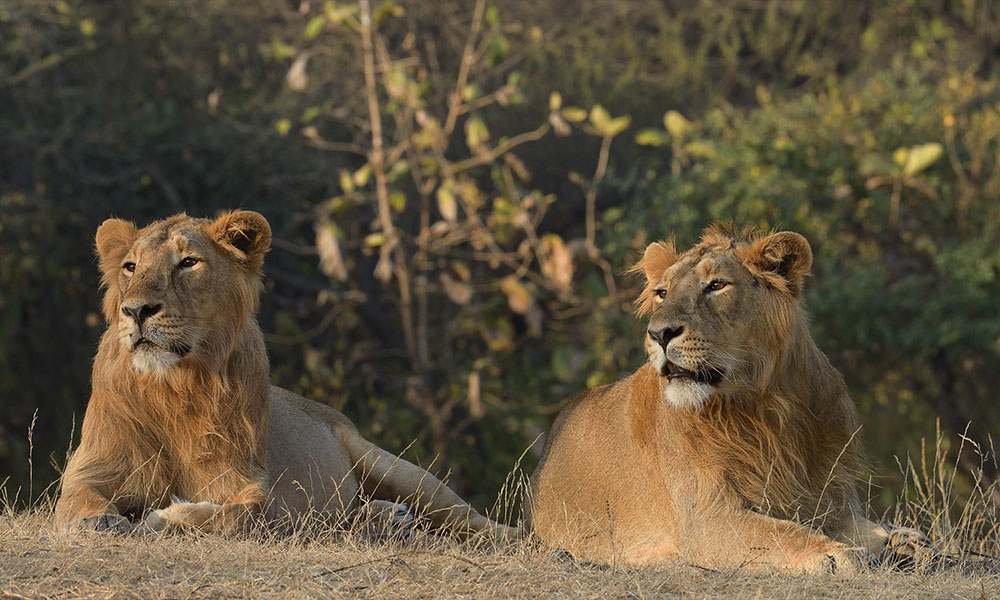
Gir Forest National Park, situated in the western Indian state of Gujarat, is a sanctuary that stands as the last refuge of the Asiatic lion. Covering an expanse of approximately 1412 square kilometers, Gir is a testament to successful conservation efforts aimed at protecting this endangered species. The park's terrain is characterized by rugged hills, plateaus, and mixed deciduous forests, providing a suitable habitat for not only the Asiatic lions but also a diverse array of wildlife, including leopards, hyenas, and various deer species. The Kamleshwar Dam within the park adds to its scenic beauty, attracting a variety of bird species. Gir Forest National Park is not only significant for its role in lion conservation but also for its contribution to the overall biodiversity of the region. Conservation initiatives, community involvement, and responsible tourism have played pivotal roles in preserving this unique ecosystem, making Gir a crucial destination for wildlife enthusiasts and researchers seeking to witness the majesty of the Asiatic lion in its natural habitat.
Periyar National Park - Kerala
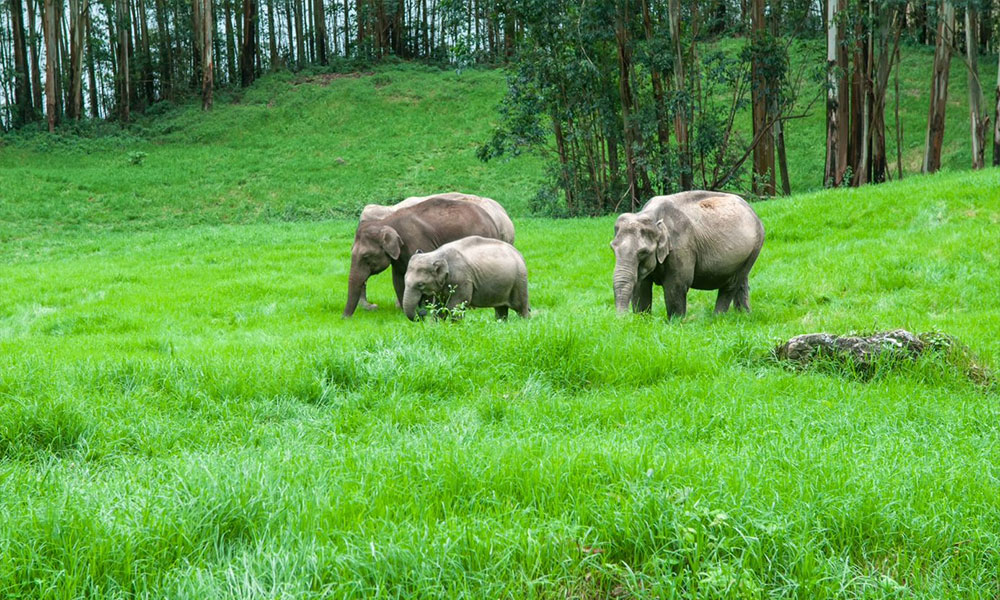
Periyar National Park, situated in the southern Indian state of Kerala, is a haven for wildlife enthusiasts and nature lovers. Spanning over 925 square kilometers, the park is known for its picturesque setting around the Periyar Lake and the diverse ecosystems it encompasses, including evergreen and deciduous forests. A highlight of the park is the Periyar Tiger Reserve, which strives to protect the endangered Bengal tiger and other wildlife species. The Periyar River, flowing through the region, adds to the park's charm, offering boat cruises that provide a unique opportunity to observe wildlife along the water's edge. Elephants, sambar deer, Indian bison, and a plethora of bird species thrive in this rich biodiversity hotspot. The park also boasts a unique feature – the artificial Periyar Lake, formed by the Mullaperiyar Dam, which not only enhances the scenic beauty but also serves as a crucial water source for the wildlife. Periyar National Park successfully combines conservation efforts with responsible tourism, allowing visitors to appreciate the beauty of the natural world while contributing to the protection of this ecologically significant area.
Ranthambore National Park - Rajasthan
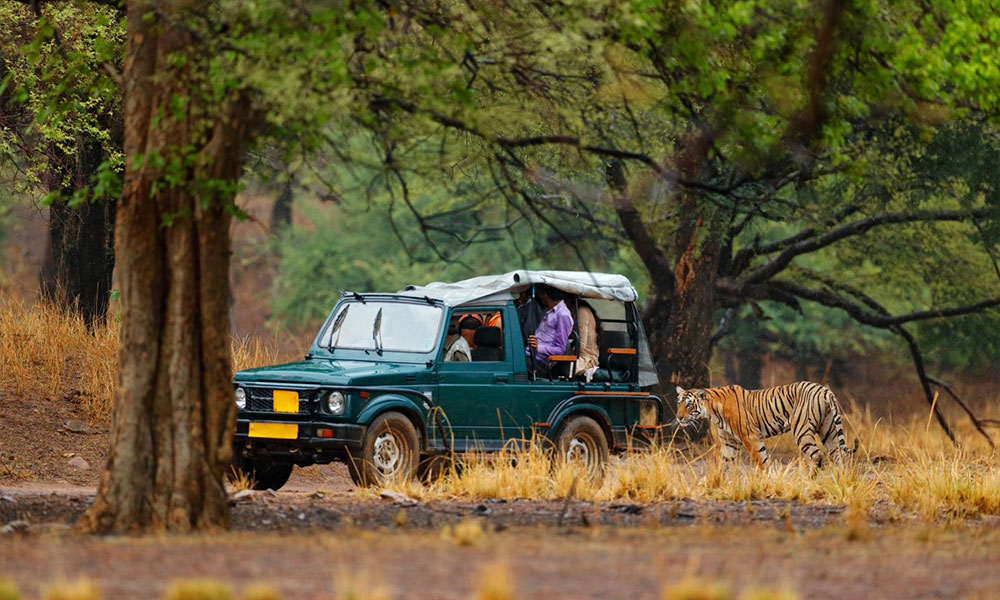
Ranthambore National Park, located in the northwestern state of Rajasthan, India, is a jewel in the realm of wildlife conservation and biodiversity. Covering an area of around 392 square kilometers, the park is renowned for its historic Ranthambore Fort and its thriving population of Bengal tigers. The landscape is a captivating blend of dry deciduous forests, rocky terrain, and serene lakes, creating a picturesque backdrop for diverse flora and fauna. Ranthambore has gained international acclaim for its successful efforts in tiger conservation, providing a safe haven for these majestic predators. Apart from tigers, the park is home to a variety of wildlife, including leopards, sambar deer, Indian gazelles, and an extensive array of bird species. The iconic ruins of the Ranthambore Fort add a historical dimension to the park, making it a unique destination that seamlessly blends nature and culture. Jeep safaris and guided tours offer visitors a chance to witness the beauty of Ranthambore's wildlife, making it a must-visit destination for wildlife enthusiasts and those seeking a glimpse into the untamed wonders of the natural world.
Bandipur National Park - Karnataka
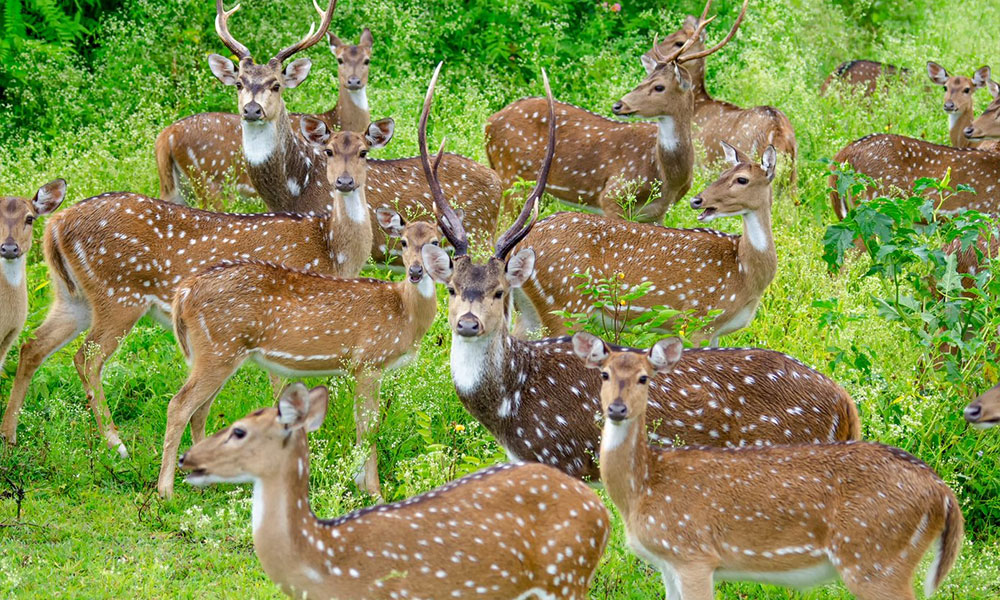
Nestled in the southern Indian state of Karnataka, Bandipur National Park stands as a testament to India's commitment to preserving its rich biodiversity. Covering an area of about 874 square kilometers, this park is part of the larger Nilgiri Biosphere Reserve, renowned for its lush landscapes and diverse ecosystems. Bandipur is celebrated for its successful conservation of the endangered Indian elephant and Bengal tiger, both of which thrive in its dense forests, grassy meadows, and water bodies. The park's scenic beauty is complemented by the Moyar River that meanders through its expanse, creating a picturesque backdrop for wildlife enthusiasts and nature lovers. Beyond its flagship species, Bandipur hosts a variety of fauna, including deer, gaurs, langurs, and an extensive array of bird species. The park's commitment to sustainable tourism, coupled with strict conservation measures, makes it a model for wildlife management. Visitors can embark on safaris and guided tours to witness the splendor of Bandipur's natural inhabitants, making it a must-visit destination for those seeking an immersive experience in the heart of India's untamed wilderness.
Sariska National Park - Rajasthan

Sariska National Park, situated in the northern Indian state of Rajasthan, unfolds as a captivating sanctuary amid the Aravalli Range. Covering an area of approximately 800 square kilometers, the park is a harmonious blend of arid landscapes, deciduous forests, and rocky hills. Renowned for its efforts in tiger conservation, Sariska has seen the successful reintroduction of Bengal tigers, bolstering its reputation as a wildlife haven. The park's diverse ecosystem is home to various other species, including leopards, striped hyenas, sambar deer, and a variety of birdlife. The ancient ruins of the Sariska Palace add a historical charm to the park, reflecting the region's rich cultural heritage. Sariska's scenic beauty is further accentuated by landmarks like the Kankwari Fort and the Siliserh Lake. Guided safaris and nature walks offer visitors a chance to explore the park's natural wonders, making Sariska National Park a destination that seamlessly combines wildlife conservation, natural beauty, and historical intrigue.
Hemis National Park - Jammu and Kashmir

Hemis National Park, nestled in the eastern part of Ladakh, Jammu and Kashmir, India, stands as a sprawling expanse of natural beauty against the backdrop of the mighty Himalayas. Covering an impressive area of approximately 4,400 square kilometers, Hemis is not only the largest national park in India but also a crucial sanctuary for diverse wildlife. The park is particularly celebrated for being a habitat of the elusive snow leopard, an endangered species that thrives in the rugged mountains and high-altitude plateaus of the region. Beyond the snow leopard, Hemis is home to a variety of flora and fauna, including Himalayan blue sheep, red foxes, and numerous species of birds. The park's landscape, characterized by deep valleys and pristine wilderness, provides a unique and challenging environment for both wildlife and nature enthusiasts. The cultural and spiritual richness of the area is accentuated by the presence of the Hemis Monastery, adding a historical touch to the natural wonders. Conservation efforts in Hemis National Park focus on preserving the delicate balance of its ecosystems and promoting sustainable tourism, ensuring that future generations can continue to marvel at the unparalleled beauty of this Himalayan wilderness.
Keoladeo National Park - Rajasthan
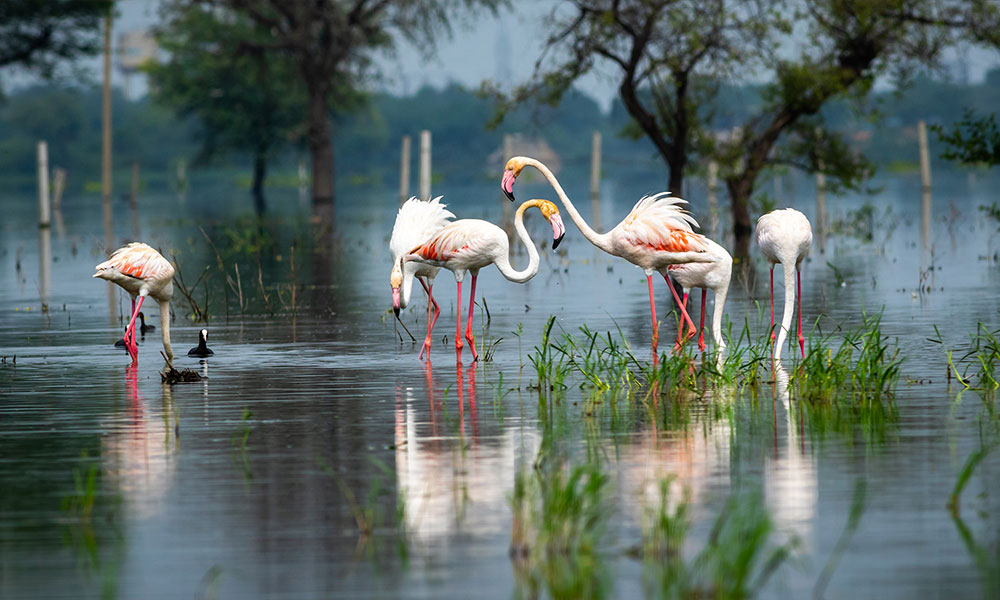
Keoladeo National Park, located in the northwestern state of Rajasthan, India, is a UNESCO World Heritage Site renowned for its avian diversity. Covering an area of around 29 square kilometers, this unique wetland ecosystem was formerly known as Bharatpur Bird Sanctuary. The park is characterized by shallow lakes, marshes, and dense vegetation, providing a crucial habitat for a myriad of bird species, both resident and migratory. Keoladeo is a haven for birdwatchers, with over 370 bird species documented, including the iconic Siberian cranes that migrate here during the winter months. The park's diverse landscape also supports a variety of mammals, reptiles, and plant life. The Keoladeo temple, dedicated to Lord Shiva and located within the park, adds a cultural and historical dimension to the natural beauty. Conservation efforts in Keoladeo National Park focus on maintaining the delicate balance of this wetland ecosystem and ensuring the continued survival of its rich avian population. The park's serene ambiance and vibrant birdlife make it a must-visit destination for nature enthusiasts and wildlife lovers.
Valley of Flowers National Park - Uttarakhand
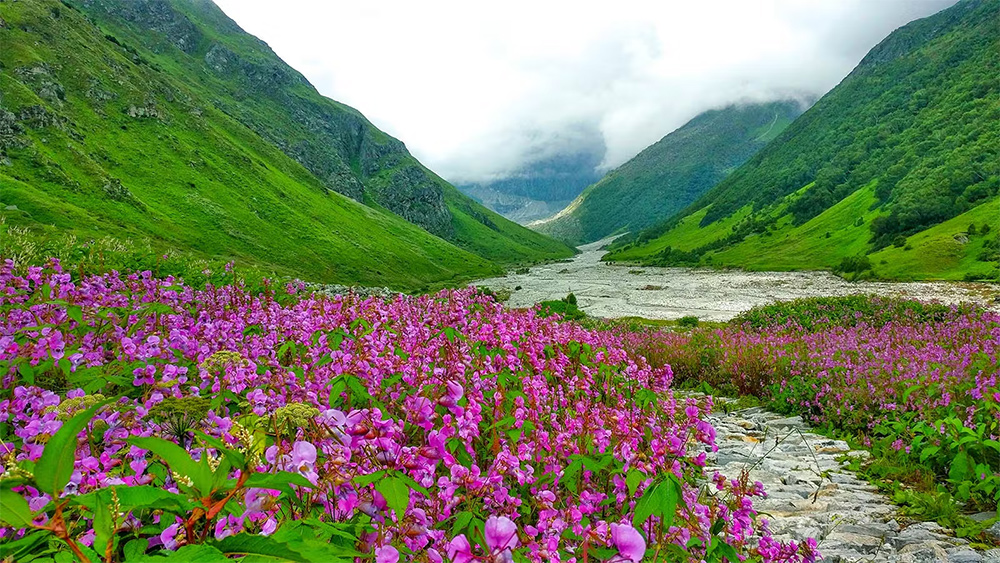
Nestled in the western Himalayas of the Indian state of Uttarakhand, the Valley of Flowers National Park is a breathtaking expanse of alpine meadows and vibrant floral beauty. Covering an area of about 87.50 square kilometers, the park earned its UNESCO World Heritage Site status due to its exceptional natural significance. Situated at an elevation between 3,200 and 6,675 meters, the valley comes alive with a riot of colors during the monsoon season when a plethora of wildflowers, including primulas, poppies, and daisies, bloom in full glory. The park is not only a haven for botanists and nature enthusiasts but also provides a habitat for diverse fauna, such as the endangered snow leopard, red foxes, and various species of butterflies. Surrounded by towering peaks and fed by the Pushpavati River, the Valley of Flowers creates a serene and enchanting atmosphere, attracting visitors from around the world. Conservation efforts are in place to preserve the delicate balance of this unique ecosystem, ensuring that future generations can continue to be captivated by the unparalleled beauty of the Valley of Flowers.
Dudhwa National Park - Uttar Pradesh
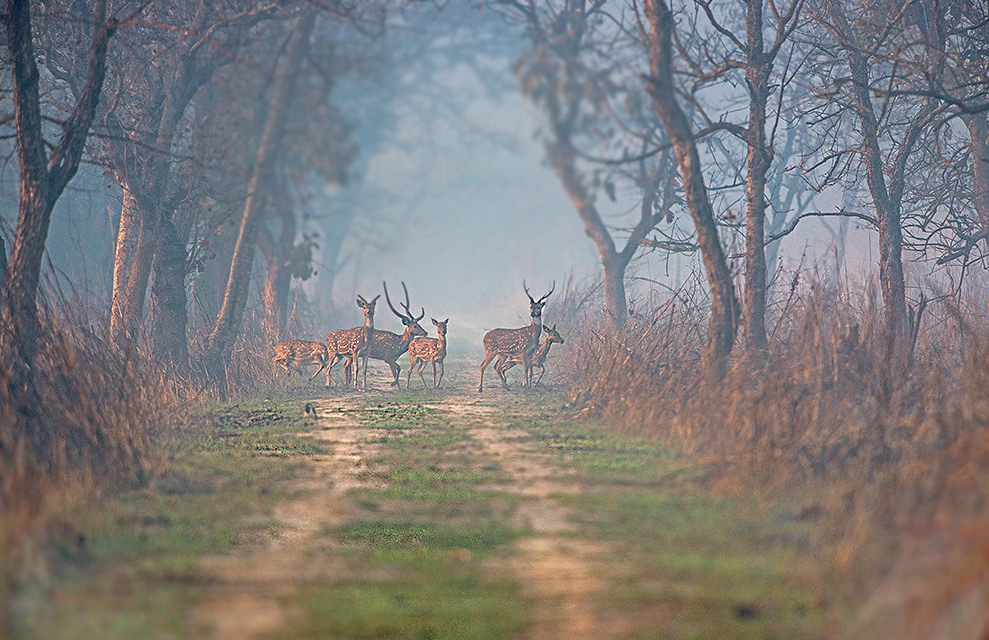
Dudhwa National Park, nestled in the Terai region of Uttar Pradesh, India, is a haven for biodiversity and a testament to successful conservation efforts. Covering an area of approximately 490 square kilometers, the park is known for its diverse ecosystems, including dense forests, grasslands, and marshes. Dudhwa is particularly renowned for its role in the conservation of the Indian one-horned rhinoceros, which was successfully reintroduced to the park after facing severe threats. The park is also home to a variety of other wildlife, including Bengal tigers, elephants, swamp deer, and numerous bird species. The Dudhwa National Park shares its border with Nepal, creating a transboundary conservation area that enhances its ecological significance. The Dudhwa River flows through the park, adding to its scenic beauty and providing a lifeline to the diverse flora and fauna. Conservation initiatives, anti-poaching measures, and sustainable tourism practices contribute to the ongoing preservation of Dudhwa National Park, making it a vital sanctuary for India's rich natural heritage.
Bannerghatta National Park - Karnataka
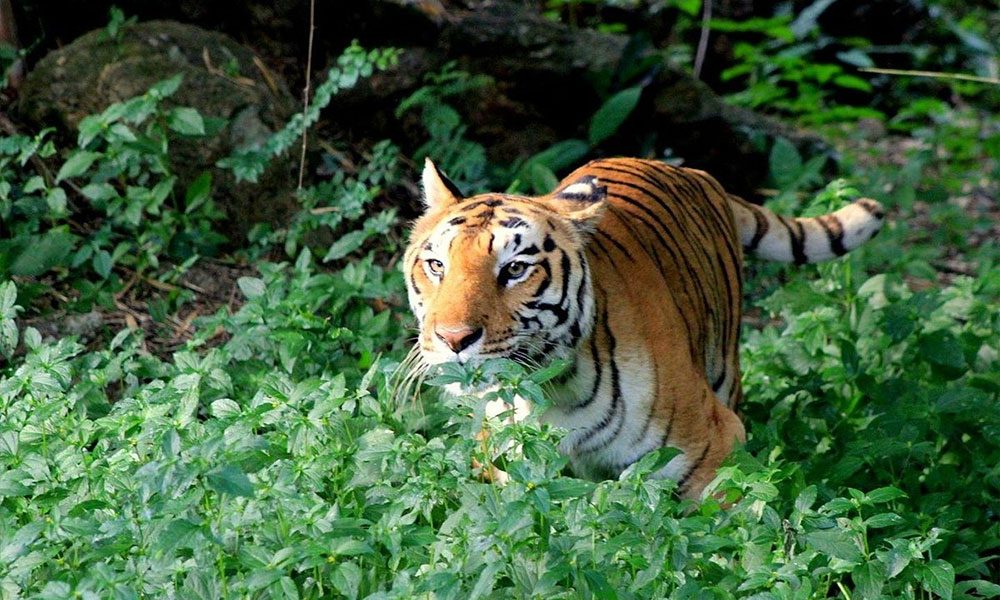
Bannerghatta National Park, located near Bangalore in the southern state of Karnataka, India, is a unique wildlife sanctuary that seamlessly integrates conservation, education, and eco-tourism. Covering an expansive area of around 104.27 square kilometers, the park encompasses a variety of landscapes, including dense forests, scrublands, and a zoo. One of the notable attractions is the Bannerghatta Biological Park, which features a diverse range of flora and fauna, including Bengal tigers, lions, elephants, and a butterfly park. The park is also home to a conservation center for rescued and rehabilitated animals, contributing to the welfare of wildlife in distress. In addition to its wildlife offerings, Bannerghatta provides opportunities for nature lovers to explore its natural beauty through safari rides, trekking, and bird watching. The park plays a crucial role in environmental education, hosting educational programs and nature camps to raise awareness about conservation. With its combination of wildlife conservation, education, and recreational activities, Bannerghatta National Park stands as a model for sustainable eco-tourism in India, attracting visitors and nature enthusiasts from near and far.
Wildlife Sanctuaries in India
Pench Wildlife Sanctuary - Madhya Pradesh/Maharashtra
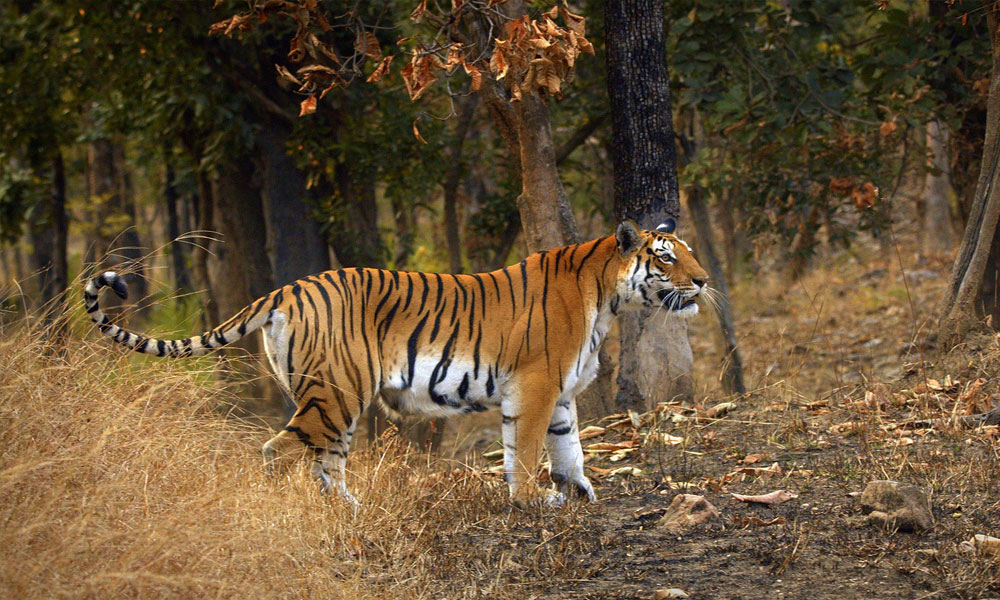
Pench Wildlife Sanctuary, situated in the central Indian states of Madhya Pradesh and Maharashtra, is a captivating expanse of natural beauty and biodiversity. Covering an area of about 758 square kilometers, the sanctuary is renowned for its lush landscapes, teak forests, and a network of meandering rivers. Named after the iconic Pench River that flows through its heart, the sanctuary served as the inspiration for Rudyard Kipling's "The Jungle Book." Pench is celebrated for its diverse flora and fauna, including Bengal tigers, leopards, wild dogs, and a variety of deer species. The birdlife is equally impressive, with numerous resident and migratory species gracing the skies. Safari experiences, both by jeep and on elephant back, offer visitors the chance to witness the rich wildlife and scenic vistas that define Pench. The park's conservation efforts focus on preserving its delicate ecosystems and ensuring the survival of its endangered and vulnerable species. With its enchanting landscapes and thriving wildlife, Pench Wildlife Sanctuary continues to captivate nature enthusiasts and wildlife lovers, providing a glimpse into the untamed wonders of the natural world.
Wayanad Wildlife Sanctuary - Kerala

Wayanad Wildlife Sanctuary, nestled in the Western Ghats of Kerala, India, is a captivating expanse of natural beauty and biodiversity. Covering an area of about 344 square kilometers, the sanctuary is known for its diverse landscapes, including dense forests, lush grasslands, and meandering rivers. Home to a variety of flora and fauna, Wayanad Sanctuary is a habitat for elephants, tigers, leopards, deer, and numerous bird species. The sanctuary's undulating terrain and scenic vistas create an enchanting backdrop for wildlife enthusiasts and nature lovers. Part of the larger Nilgiri Biosphere Reserve, Wayanad Sanctuary is recognized for its ecological significance and conservation efforts. Visitors to the sanctuary can explore its wilderness through guided safaris and nature walks, providing an opportunity to witness the rich biodiversity that thrives in this natural haven. With its commitment to conservation and sustainable tourism, Wayanad Wildlife Sanctuary stands as a testament to the beauty and importance of preserving India's diverse and precious ecosystems.
Nagarhole Wildlife Sanctuary - Karnataka
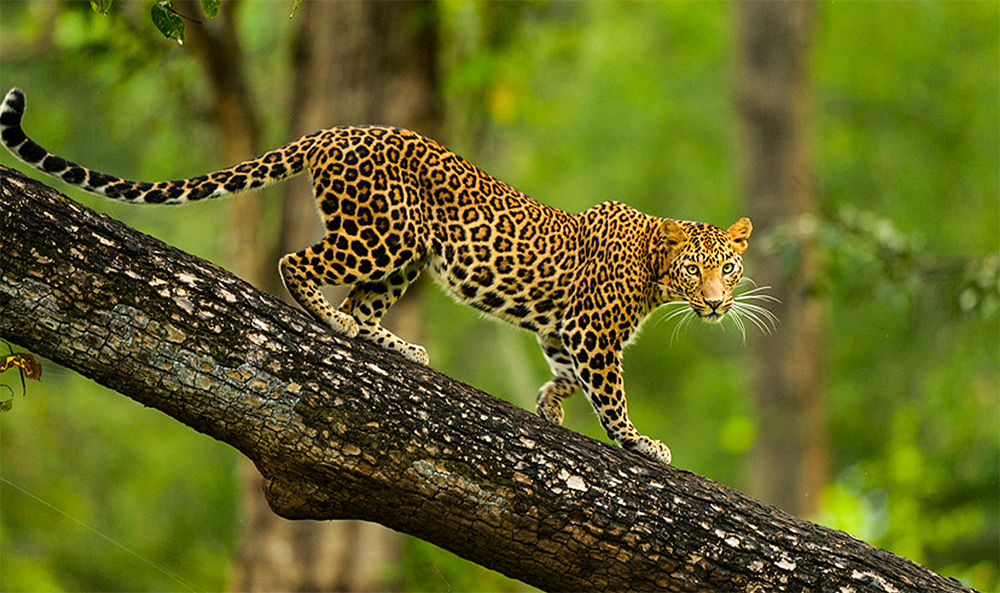
Nagarhole Wildlife Sanctuary, located in the southern Indian state of Karnataka, is a pristine haven for wildlife enthusiasts and nature lovers. Spanning an area of around 643 square kilometers, the sanctuary is characterized by thick forests, grassy meadows, and numerous water bodies, including the Kabini River. Renowned for its diverse flora and fauna, Nagarhole is home to a variety of wildlife, such as elephants, tigers, leopards, Indian bison (gaur), and a rich avian population. The park's picturesque landscapes, with dense canopies and tranquil lakes, provide a serene setting for safari experiences and wildlife observation. The Kabini reservoir within the sanctuary attracts a congregation of wildlife during the dry season, offering a unique opportunity for visitors to witness the rich biodiversity of the region. Nagarhole Wildlife Sanctuary is not only a vital habitat for several endangered species but also a model for successful wildlife conservation and ecotourism. With its commitment to preserving the natural balance of the ecosystem, Nagarhole continues to be a sought-after destination, providing a glimpse into the untamed beauty of India's wildlife.
Gorumara Wildlife Sanctuary - West Bengal
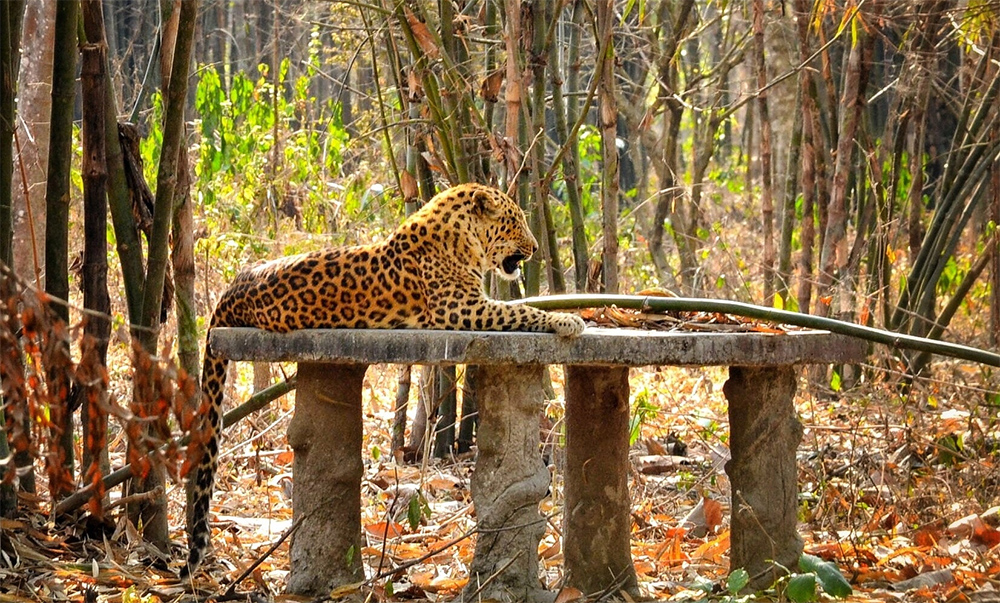
Gorumara Wildlife Sanctuary, nestled in the eastern Himalayan foothills of West Bengal, India, is a captivating sanctuary known for its rich biodiversity and scenic landscapes. Covering an area of approximately 79 square kilometers, the sanctuary is characterized by lush forests, grasslands, and meandering rivers. Home to a diverse array of flora and fauna, Gorumara is particularly famous for its population of Indian one-horned rhinoceros, elephants, and various species of deer. The sanctuary is a haven for birdwatchers, with numerous avian species gracing its skies. The Murti and Jaldhaka rivers flow through the sanctuary, enhancing its natural beauty and providing crucial water sources for the wildlife. Gorumara offers visitors the opportunity to explore its wilderness through jeep safaris and watchtowers strategically placed for wildlife observation. With its commitment to conservation and responsible tourism, Gorumara Wildlife Sanctuary stands as a testament to the ecological richness of the region and the importance of preserving India's natural heritage.
Eaglenest Wildlife Sanctuary - Arunachal Pradesh

Eaglenest Wildlife Sanctuary, situated in the picturesque state of Arunachal Pradesh in northeastern India, is a biodiverse treasure nestled within the Eastern Himalayas. Covering an area of around 218 square kilometers, this sanctuary is renowned for its lush evergreen forests, alpine meadows, and diverse flora and fauna. Named after the Red Eagle Division of the Indian Army that discovered it, Eaglenest is a haven for birdwatchers, boasting an impressive avian population, including the elusive Bugun Liocichla and Ward's Trogon. The sanctuary is also home to a variety of mammals, such as the red panda, clouded leopard, and Asiatic black bear. The pristine landscapes of Eaglenest, coupled with its rich biodiversity, make it a haven for nature enthusiasts and researchers alike. Conservation efforts are paramount in this sanctuary, which serves as a testament to the importance of preserving the unique ecosystems of the Eastern Himalayas. With its breathtaking scenery and ecological significance, Eaglenest Wildlife Sanctuary stands as a testament to India's commitment to protecting its natural heritage.
Mudumalai Wildlife Sanctuary - Tamil Nadu
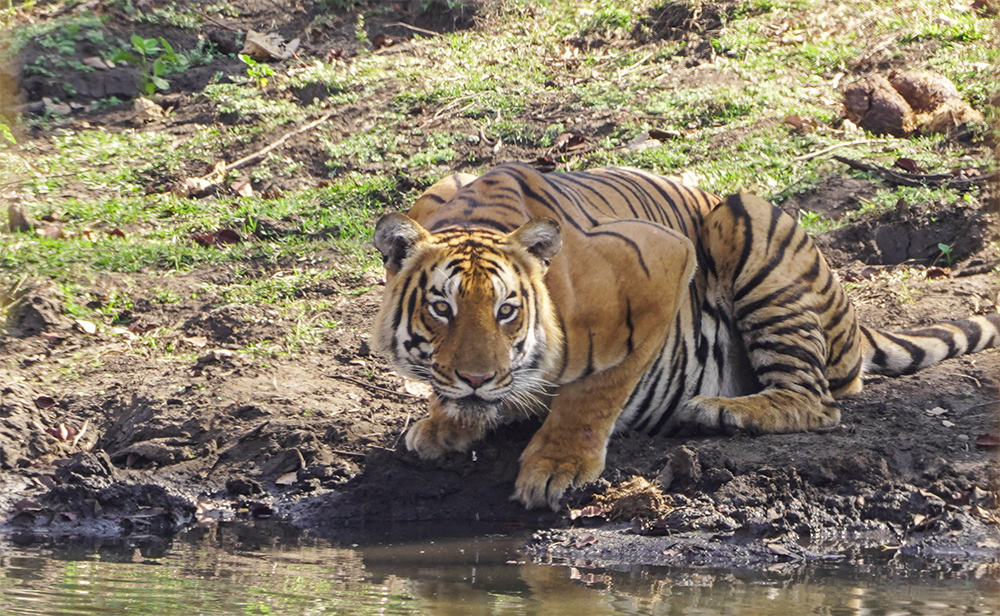
Mudumalai Wildlife Sanctuary, situated in the southern Indian state of Tamil Nadu, is a captivating expanse of natural beauty and biodiversity. Covering an area of around 321 square kilometers, the sanctuary is part of the larger Nilgiri Biosphere Reserve and shares its borders with Karnataka and Kerala. Characterized by a diverse landscape of hills, valleys, and tropical forests, Mudumalai is home to a rich variety of flora and fauna. The sanctuary is renowned for its population of Indian elephants, gaur (Indian bison), and numerous species of deer. The Moyar River flows through the sanctuary, enhancing its scenic beauty and providing a vital water source for the wildlife. Mudumalai offers visitors the chance to explore its wilderness through jeep safaris and guided nature walks, providing a unique opportunity to witness the untamed beauty of the Western Ghats. With its commitment to conservation and sustainable tourism practices, Mudumalai Wildlife Sanctuary stands as a testament to India's efforts in preserving its unique and precious ecosystems.
Tadoba Andhari Tiger Reserve - Maharashtra
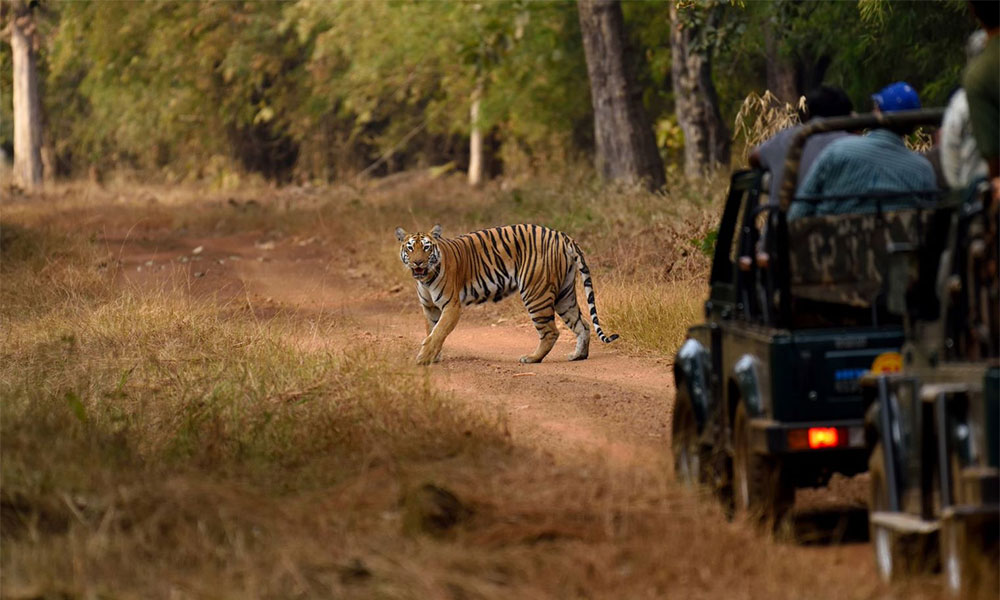
Tadoba Andhari Tiger Reserve, nestled in the Chandrapur district of Maharashtra, India, is a testament to successful wildlife conservation and a haven for those seeking a rendezvous with nature. Covering an expansive area of approximately 1,727 square kilometers, this reserve is celebrated for its lush landscapes, dense forests, and thriving biodiversity. Tadoba is particularly renowned for its healthy population of Bengal tigers, making it a prime destination for wildlife enthusiasts and photographers. The Andhari River meanders through the reserve, providing a lifeline to the diverse flora and fauna that call Tadoba home. Apart from tigers, the reserve hosts a variety of wildlife, including leopards, sloth bears, Indian gaurs, and numerous species of deer and birds. Tadoba offers visitors an opportunity to witness the untamed beauty of the wild through safari experiences and guided tours. Conservation efforts in the reserve focus on habitat preservation, anti-poaching measures, and community involvement, contributing to the overall well-being of the region's ecosystems. With its commitment to the coexistence of wildlife and responsible tourism, Tadoba Andhari Tiger Reserve stands as a shining example of successful conservation in the heart of India.
